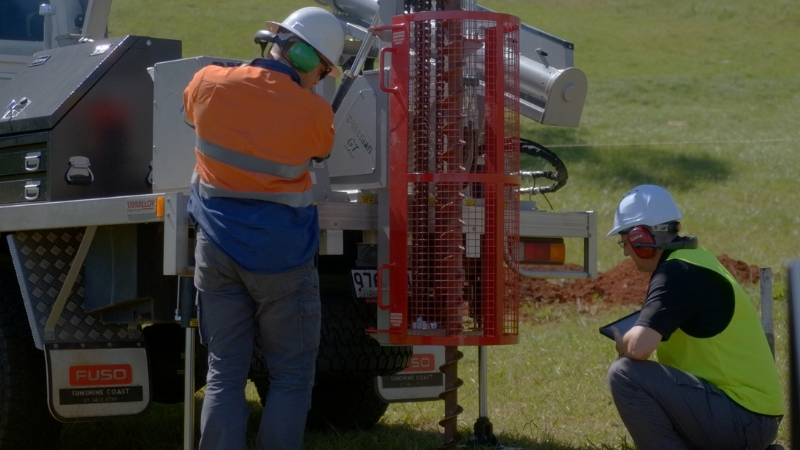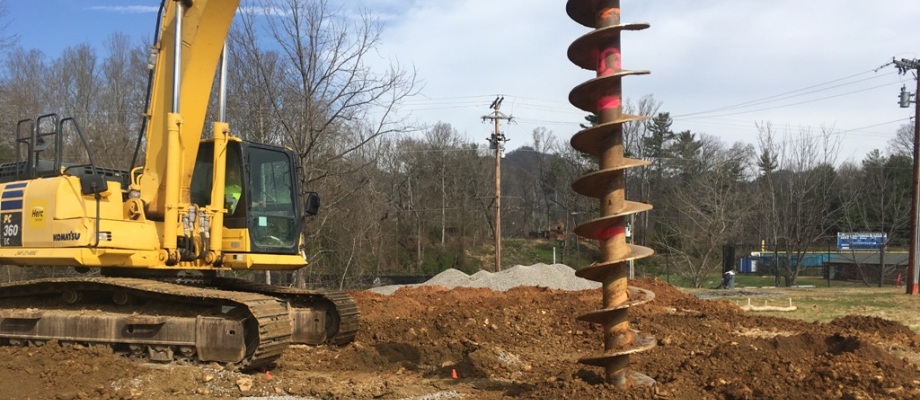Navigating the Complexities of Geotechnical Eng Projects
Wiki Article
A Comprehensive Take A Look At the Range of Technique for Geotechnical Designers and Their Effect On Job Usefulness and Danger Reduction
The extent of technique for geotechnical designers includes a variety of critical obligations that straight influence project feasibility and threat administration. What particular techniques do geotechnical designers employ to navigate these complexities properly?Duties and Obligations of Geotechnical Engineers
Geotechnical engineers play a vital role in the foundation of building projects, ensuring that structures are improved solid ground. Their obligations include a series of activities important for analyzing soil and rock residential or commercial properties, which directly influence project feasibility and safety and security. At first, geotechnical engineers conduct site examinations to gather vital information relating to subsurface conditions. This includes exploration boreholes, tasting soil and rock, and performing in-situ examinations to figure out material features.
Partnership is also a key facet of their function; they function very closely with civil designers, designers, and environmental professionals to make certain that geotechnical factors to consider are integrated right into total job planning. Eventually, the expertise of geotechnical designers is crucial in advertising the safety, sustainability, and viability of building endeavors.
Trick Areas of Geotechnical Evaluation
Dirt samples and geological surveys are fundamental aspects in the key locations of geotechnical analysis. These tasks supply essential data regarding the physical and chemical buildings of the subsurface materials, allowing designers to evaluate site conditions accurately. The analysis typically includes dirt classification, compaction, shear toughness, and leaks in the structure, all of which are crucial for comprehending the actions of soils under numerous loading problems.An additional considerable location of emphasis is slope security analysis, which reviews the risk of landslides or dirt disintegration. This involves analyzing the geometry of slopes, dirt kinds, and groundwater conditions. Site characterization is likewise essential, as it includes an extensive investigation of the site's history, consisting of previous construction, contamination, and natural threats.
Additionally, groundwater analysis plays a crucial duty in geotechnical assessment, influencing both the style and building stages. Recognizing the groundwater table, circulation instructions, and possible fluctuations is vital for reliable structure design and stormwater administration.
With each other, these vital locations of geotechnical evaluation create an extensive structure that educates decision-making procedures, making certain sustainable and secure design methods while lessening possible threats connected with subsurface problems.
Effect on Job Expediency
The expediency of a building task pivots significantly on the understandings got from geotechnical investigations. These examinations provide important data relating to soil properties, groundwater problems, and subsurface attributes, which are critical for figuring out the suitability of a website for building. By assessing elements such as dirt bearing capacity, settlement possibility, and incline stability, geotechnical engineers play a critical role in examining whether a project can continue as planned or if modifications are needed.Moreover, the outcomes of geotechnical research studies directly influence job style and building and construction approaches. Accurate geotechnical data permits educated decision-making, making sure that structural layouts accommodate site-specific conditions and abide by regulatory needs. This procedure helps in maximizing resource appropriation, therefore lowering unanticipated delays and expense overruns.
In addition, an extensive geotechnical analysis boosts the overall stability of a task by identifying potential difficulties early in the preparation stage. By addressing these civil consulting engineers obstacles proactively, stakeholders can enhance the task's chance of success, guaranteeing that it fulfills both functional and financial goals. In summary, the payments of geotechnical designers are indispensable to developing job expediency, therefore preparing for efficient job execution.
Threat Reduction Approaches
While construction jobs naturally entail different unpredictabilities, implementing effective risk reduction approaches can considerably decrease possible issues occurring from geotechnical elements. Geotechnical engineers play a pivotal role in recognizing, evaluating, and resolving threats connected with subsurface problems, making certain that projects proceed smoothly and continue to be within budget.One key technique entails thorough website investigations, that include dirt sampling, in-situ screening, and lab analysis. These analyses give essential data on soil actions, strength, and composition, enabling designers to make structures and earthworks that are both secure and efficient. Moreover, employing sophisticated modeling strategies, such as limited aspect evaluation, allows designers to anticipate just how soil and structural communications may progress under various loading problems.
Another effective reduction method is the execution of proper layout alterations, such as utilizing support methods or embracing alternate building techniques, which can improve security and decrease vulnerability to geotechnical problems. Additionally, continuous monitoring of website problems during construction can help with timely interventions, hence minimizing the possibility of unexpected difficulties.
Study and Real-World Applications
Situation researches provide beneficial insights into the useful applications of geotechnical engineering principles and highlight the efficiency of threat mitigation strategies in real-world situations. One noteworthy instance is the building of the Centuries Dome in London, where innovative ground treatment methods were carried out to address tough dirt conditions. By using deep cement mixing and dirt stabilization techniques, engineers successfully produced a secure foundation that minimized possible settlement risks, making sure the job's expediency.Another case is the stablizing of the hillside for the new highway in The golden state, where extensive slope evaluation and monitoring were utilized. Geotechnical engineers utilized maintaining wall surfaces and drainage systems to take care of groundwater, dramatically lowering the threat of landslides. This proactive technique not just maintained the honesty of the highway yet likewise enhanced public safety and security.
Moreover, the expansion of a significant airport demonstrated the importance of comprehensive website investigations. geotechnical industry. Geotechnical engineers determined problematic dirt layers and recommended particular foundation layouts, resulting in an effective job conclusion with minimized delays. These situation researches underscore the crucial duty that geotechnical engineers play in evaluating dangers and executing effective options, therefore enhancing job feasibility and general success
Verdict

By evaluating factors such as soil bearing capacity, settlement possibility, and slope security, geotechnical designers play an essential role in examining whether a job can proceed as prepared or if modifications are necessary.
In recap, the contributions of geotechnical engineers are indispensable to developing project expediency, consequently laying the groundwork for efficient project execution.
Geotechnical designers identified troublesome dirt layers and suggested certain foundation styles, leading to an effective project completion with decreased hold-ups. geo tech engineering. These instance studies highlight the essential role that geotechnical engineers play in examining risks and executing reliable remedies, thereby improving job usefulness and overall success
With efficient threat reduction strategies and the application of advanced modeling techniques, geotechnical engineers enhance job outcomes and lessen threats connected to soil and groundwater problems.
Report this wiki page